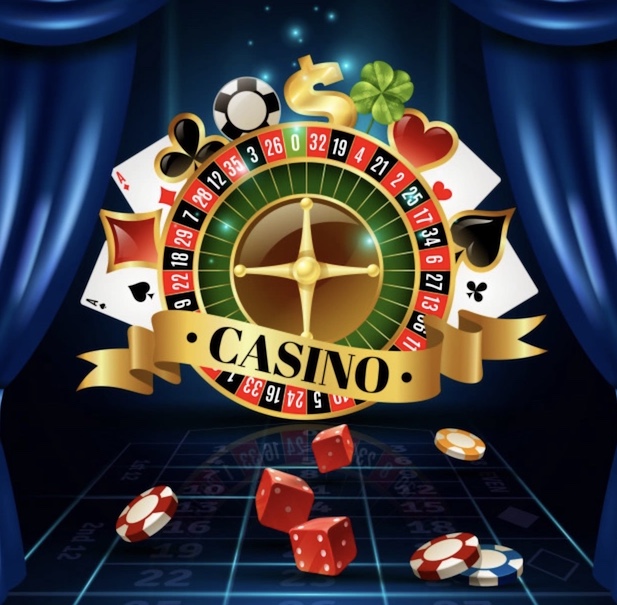In what way Gambling Games Use Color and Layout to Attract Participants
In a lively and exciting world of gaming establishments, where luck and tactics intertwine, hues and aesthetic play a key role in attracting players. trang nổ hũ uy tín From the moment players step into a casino or log into a gaming platform, they are enveloped in a visual feast that captures their attention and entices them to explore further. Vivid colors, engaging graphics, and innovative layouts are meticulously crafted to create an atmosphere of excitement and expectation, ultimately enhancing the gaming experience.
As gamblers move through the ever-changing landscape of casino games, they encounter a variety of designs that not only serve visual purposes but also influence feelings and choices. Colors like scarlet and yellow symbolize riches and fortune, while calm navy and emeralds can create a much tranquil environment. Grasping how these elements work together enables casinos to create an welcoming and energizing atmosphere that encourages players to engage with the games, invest more time at the tables, and boost their general enjoyment.
The Study of Hue in Casino Games

Color plays a crucial role in the creation of casino games, influencing players’ feelings and behaviors. Bright and bold shades, such as red and gold, are often used to ignite thrill and attract notice. These hues create a sense pressure and dynamism, encouraging gamblers to engage more eagerly with the game. By thoughtfully selecting hues, creators aim to elicit feelings of joy and excitement, which can enhance the overall player experience.
Distinct colors also have psychological meanings that can impact how participants perceive their possibilities of winning. For instance, lime is commonly associated with fortune and prosperity, making it a well-liked choice in activities like roulette and poker games. This connection can result gamblers to feel more positive and self-assured in their gameplay, ultimately motivating them to bet more. Comprehending these connections allows game creators to design environments that enhance player happiness and engagement.
Furthermore, the interface of gaming interfaces often uses color gradients and differing shades to instruct player actions. For example, successful outcomes may be highlighted with bright, contrasting shades, creating a visual cue. This approach reinforces positive outcomes and promotes repeated engagement. By utilizing color psychology, casinos can develop games that not only captivate participants but also hold them engaged and committed in their play experience.
Creative Features that Engage Gamers
The aesthetic appeal of gambling games is largely influenced by the use of vibrant colors. Bright and contrasting colors are strategically chosen to create an appealing atmosphere that captures interest. For example, crimson and golds often signify luck and wealth, which is why they are common in the color schemes of slot machines and table surfaces. These colors not only attract players in, but they also stir emotions associated with thrill and expectation, enhancing the total gaming experience.
In parallel to color, the design and layout of gambling games play a crucial role in player attraction. Games are designed to be intuitive, ensuring that players can quickly understand the rules and gameplay. User-friendly interfaces, along with captivating graphics and animations, help maintain gamer interest and promote extended play sessions. The physical elements, such as the feel of the controls and the audio of the games, also add to a holistic sensory experience that keeps players engaged.
Finally, conceptual elements in gaming design can significantly influence player choice. Many gambling games are inspired by popular culture, fairy tales, or exploration motifs, featuring symbols and characters that resonate with players. These themes create a sense of immersion and connection, making each game feel unique. When players feel a connection to the theme, they are more likely to opt for that game over others, leading to higher participation and enthusiasm within the gambling environment.
Case Studies: Effective Gambling Slot Designs
One prime example of successful casino game design is the popular slot machine series based around popular movies. Games such as those based on the Wizard of Oz and Game of Thrones utilize vibrant colors and top-notch graphics to immerse players in well-known narratives. The use of lively visuals and captivating sound effects takes the attention of players, building an emotional connection to the theme. This strategy not only fosters longer play but also boosts the overall gaming experience, resulting in increased player retention.
Another effective case is the use of the psychology of color in table games like blackjack and the wheel. Casinos often create these games with dark reds and greens, colors traditionally connected with luck and wealth. For instance, the green felt on a 21 table provides a relaxing effect, while the red accents in the wheel invite excitement. This intentional use of color helps to establish an inviting atmosphere that encourages players to engage, satisfying their psychological impulses and enhancing their enjoyment.
Finally, social casino games that include social features and vivid, lively designs have achieved remarkable success in engaging players. Games like Zynga’s Poker and Slot-O-Mania leverage bright colors and playful animations to create an inviting online environment. The inclusion of leaderboards, social sharing options, and in-game rewards promotes competition and community, drawing players in for longer sessions. Such designs not only make the games visually attractive but also underscore social interaction, a vital factor in player retention and engagement within online casino environments.